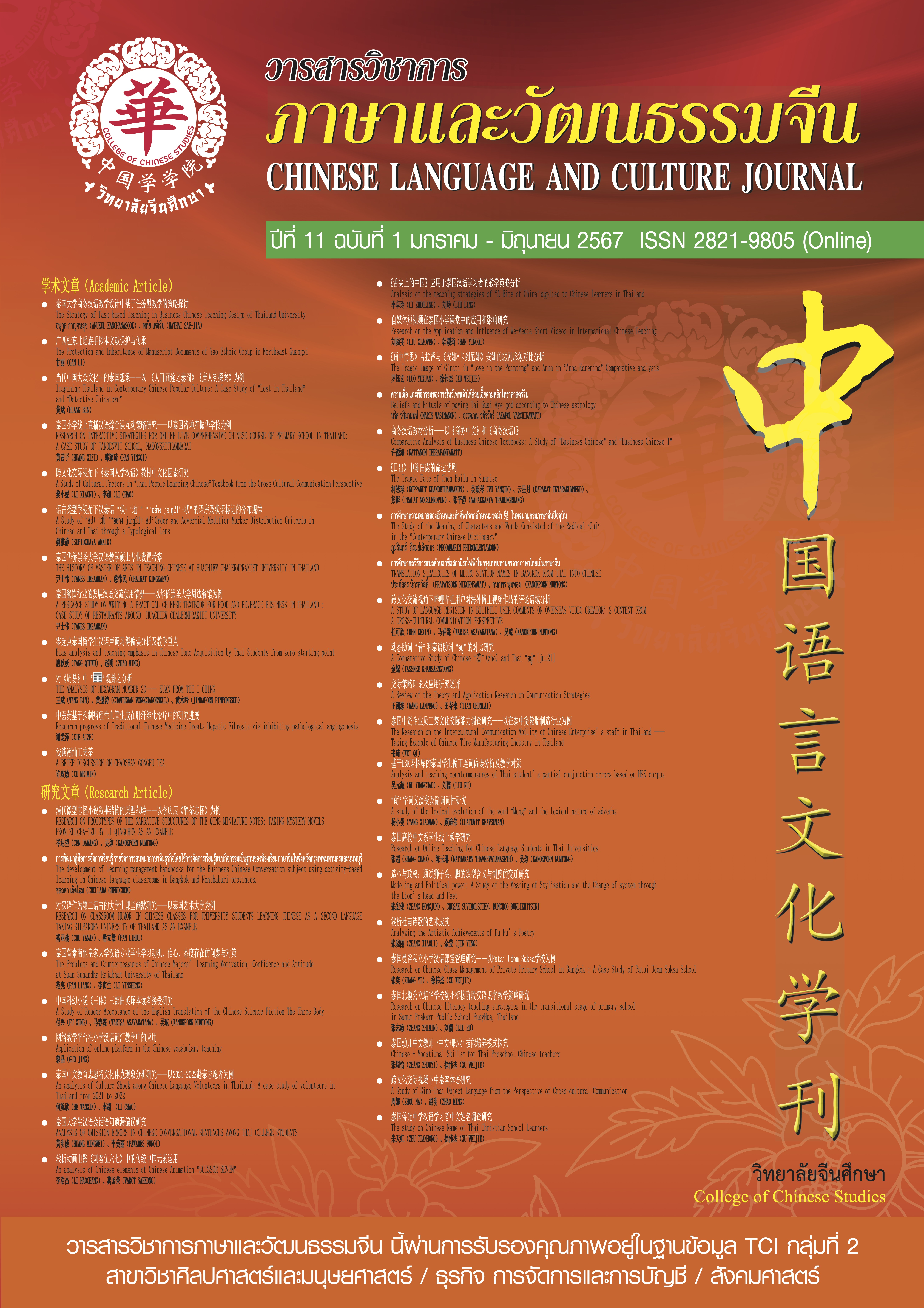Research progress of Traditional Chinese Medicine Treats Hepatic Fibrosis via inhibiting pathological angiogenesis
Keywords:
hepatic fibrosis, pathologic angiogenesis, hepatic stellate cells, antifibrotic, Traditional Chinese medicineAbstract
Hepatic fibrosis is caused by the formation of scar tissue in the liver, a process that leads to the gradual replacement of healthy liver tissue. Without effective treatment, it may lead to impaired liver function and ultimately to the serious consequences of functional failure. Hepatic fibrosis usually results from the development of chronic liver disease, including, but not limited to, hepatitis B or C, excessive alcohol consumption, and non-alcoholic fatty liver disease. Pathological angiogenesis plays a crucial role in the pathology of hepatic fibrosis by promoting the proliferation of intrahepatic neovessels. The appearance of these neovessels helps to reduce the extent of damaged areas of the liver, thereby inducing the activation of hepatic stellate cells (HSCs). Hematopoietic stem cells are tasked with the production of excess collagen and other extracellular matrix proteins, a process that promotes the progression of Hepatic fibrosis. Several studies have shown that TCM can exhibit anti-angiogenic effects by inhibiting the production of pro-angiogenic factors such as vascular endothelial growth factor and angiopoietin-2, and reducing endothelial cell proliferation. Traditional Chinese medicine (TCM) therapy targets pathological angiogenesis and offers a potential option for the treatment of Hepatic fibrosis. This review highlights TCM's unique understanding of pathological angiogenesis in the treatment of Hepatic fibrosis and may provide a basis for future research.
References
Affò, S.Sancho-Bru, P. CCL2: a link between hepatic inflammation, fibrosis and angiogenesis? Gut, (2014). 63(12), 1834-1835. 10.1136/gutjnl-2014-306905.
Anand, P., Kunnumakkara, A. B. Bioavailability of curcumin: problems and promises. Molecular Pharmaceutics, (2007). 4(6), 807-818.
Aschner, M., Skalny, A. V. The role of hypoxia-inducible factor 1 alpha (HIF-1α) modulation in heavy metal toxicity. Archives of Toxicology, (2023). 97(5), 1299-1318. 10.1007/s00204-023-03483-7.
Attia, A. A., Salama, A. F. Amygdalin potentiates the anti-cancer effect of Sorafenib on Ehrlich ascites carcinoma and ameliorates the associated liver damage. Scientific Reports, (2022). 12(1), 6494. 10.1038/s41598-022-10517-0.
Baghaei, K., Mazhari, S. Therapeutic potential of targeting regulatory mechanisms of hepatic stellate cell activation in liver fibrosis. Drug Discovery Today, (2022). 27(4), 1044-1061. 10.1016/j.drudis.2021.12.012.
Bernard, M., Yang, B. Autophagy drives fibroblast senescence through MTORC2 regulation. Autophagy, (2020). 16(11), 2004-2016. 10.1080/15548627.2020.1713640.
Böttcher, K.Pinzani, M. Pathophysiology of liver fibrosis and the methodological barriers to the development of anti-fibrogenic agents. Advanced Drug Delivery Reviews, (2017). 121, 3-8. 10.1016/j.addr.2017.05.016.
Gan, C., Cai, Q. Inflammasomes and Pyroptosis of Liver Cells in Liver Fibrosis. Frontiers in Immunology, (2022). 13, 896473. 10.3389/fimmu.2022.896473.
Ginès, P., Castera, L. Population screening for liver fibrosis: Toward early diagnosis and intervention for chronic liver diseases. Hepatology (Baltimore, Md.), (2022). 75(1), 219-228. 10.1002/hep.32163.
Guo, Y.-C.Lu, L.-G. Antihepatic Fibrosis Drugs in Clinical Trials. Journal of Clinical and Translational Hepatology, (2020). 8(3), 304-312. 10.14218/JCTH.2020.00023.
Higashi, T., Friedman, S. L. Hepatic stellate cells as key target in liver fibrosis. Advanced Drug Delivery Reviews, (2017). 121, 27-42. 10.1016/j.addr.2017.05.007.
Hussein, K. H., Park, K.-M. Decellularized hepatic extracellular matrix hydrogel attenuates hepatic stellate cell activation and liver fibrosis. Materials Science & Engineering. C, Materials For Biological Applications, (2020). 116, 111160. 10.1016/j.msec.2020.111160.
Kamm, D. R.McCommis, K. S. Hepatic stellate cells in physiology and pathology. The Journal of Physiology, (2022). 600(8), 1825-1837. 10.1113/JP281061.
Kisseleva, T.Brenner, D. Molecular and cellular mechanisms of liver fibrosis and its regression. Nature Reviews. Gastroenterology & Hepatology, (2021). 18(3), 151-166. 10.1038/s41575-020-00372-7.
Kityania, S., Nath, R. Acteoside (Verbascoside): A Prospective Therapeutic Alternative against Hepatocellular Carcinoma by Inhibiting the Expression of AXL, FGFR, BRAF, TIE2 and RAF1 Targets. Combinatorial Chemistry & High Throughput Screening, (2023). 26(10), 1907-1919. 10.2174/1386207326666221031121426.
Li, H. Advances in anti hepatic fibrotic therapy with Traditional Chinese Medicine herbal formula. Journal of Ethnopharmacology, (2020). 251, 112442. 10.1016/j.jep.2019.112442.
Mahmud, S., Chemaitelly, H. Characterizing trends and associations for hepatitis C virus antibody prevalence in the Middle East and North Africa: meta-regression analyses. Scientific Reports, (2022). 12(1), 20637. 10.1038/s41598-022-25086-5.
Makino, Y., Hikita, H. CTGF Mediates Tumor-Stroma Interactions between Hepatoma Cells and Hepatic Stellate Cells to Accelerate HCC Progression. Cancer Research, (2018). 78(17), 4902-4914. 10.1158/0008-5472.CAN-17-3844.
Medina, J., Arroyo, A. G. Angiogenesis in chronic inflammatory liver disease. Hepatology (Baltimore, Md.), (2004). 39(5), 1185-1195.
Neshat, S. Y., Quiroz, V. M. Liver Disease: Induction, Progression, Immunological Mechanisms, and Therapeutic Interventions. International Journal of Molecular Sciences, (2021). 22(13). 10.3390/ijms22136777.
Nobakht, M., Fattahi, M. A study on the teratogenic and cytotoxic effects of safflower extract. Journal of Ethnopharmacology, (2000). 73(3), 453-459.
Parola, M.Pinzani, M. Liver fibrosis: Pathophysiology, pathogenetic targets and clinical issues. Molecular Aspects of Medicine, (2019). 65, 37-55. 10.1016/j.mam.2018.09.002.
Petersen, J., Dandri, M. Prevention of hepatitis B virus infection in vivo by entry inhibitors derived from the large envelope protein. Nature Biotechnology, (2008). 26(3), 335-341. 10.1038/nbt1389.
Puche, J. E., Saiman, Y. Hepatic stellate cells and liver fibrosis. Comprehensive Physiology, (2013). 3(4), 1473-1492. 10.1002/cphy.c120035.
Ramos-Tovar, E.Muriel, P. Molecular Mechanisms That Link Oxidative Stress, Inflammation, and Fibrosis in the Liver. Antioxidants (Basel, Switzerland), (2020). 9(12). 10.3390/antiox9121279.
Rosmorduc, O.Housset, C. Hypoxia: a link between fibrogenesis, angiogenesis, and carcinogenesis in liver disease. Seminars In Liver Disease, (2010). 30(3), 258-270. 10.1055/s-0030-1255355.
Schwabe, R. F., Tabas, I. Mechanisms of Fibrosis Development in Nonalcoholic Steatohepatitis. Gastroenterology, (2020). 158(7), 1913-1928. 10.1053/j.gastro.2019.11.311.
Song, L., Chen, T.-Y. Pterostilbene prevents hepatocyte epithelial-mesenchymal transition in fructose-induced liver fibrosis through suppressing miR-34a/Sirt1/p53 and TGF-β1/Smads signalling. British Journal of Pharmacology, (2019). 176(11), 1619-1634. 10.1111/bph.14573.
Tong, G., Chen, X. Fibroblast growth factor 18 attenuates liver fibrosis and HSCs activation via the SMO-LATS1-YAP pathway. Pharmacological Research, (2022). 178, 106139. 10.1016/j.phrs.2022.106139.
Xiao, Z., Ji, Q. Amygdalin Ameliorates Liver Fibrosis through Inhibiting Activation of TGF-β/Smad Signaling. Chinese Journal of Integrative Medicine, (2023). 29(4), 316-324. 10.1007/s11655-021-3304-y.
Xue, X., Zhao, X. Carthami flos extract against carbon tetrachloride-induced liver fibrosis via alleviating angiogenesis in mice. Phytomedicine : International Journal of Phytotherapy and Phytopharmacology, (2023). 108, 154517. 10.1016/j.phymed.2022.154517.
Downloads
Published
How to Cite
Issue
Section
License
Copyright (c) 2024 Chinese Language and Culture Journal

This work is licensed under a Creative Commons Attribution-NonCommercial-NoDerivatives 4.0 International License.
บทความที่ได้รับการตีพิมพ์เป็นลิขสิทธิ์ของวารสารภาษาและวัฒนธรรมจีน มหาวิทยาลัยหัวเฉียวเฉลิมพระเกียรติ
บทความใน “วารสารวิชาการภาษาและวัฒนธรรมจีน” เป็นทรรศนะของผู้เขียนโดยเฉพาะ กองบรรณาธิการไม่มีส่วนในความคิดเห็นในข้อเขียนเหล่านั้น




